Operation of a MOEMS Deformable Mirror in Cryo: Challenges and Results
Abstract
:1. Introduction
2. Deformable Mirrors
2.1. BMC Deformable Mirror
2.2. Iris AO Deformable Mirror
3. Cryogenic Interferometric Test Set-Up
3.1. Interferometric Bench
3.2. Cryogenic Experiment
3.3. PTT111 Mounting
4. PTT111 Surface Characterization
- -
- a pure piston (150 nm) on the central M1 segment,
- -
- a global astigmatism on the mirror, using the global Zernike coefficient set at 0.125,
- -
- a series of three identical tilts on all segments in X direction, with 0.25 mrad, 1.5 mrad, and 4.9 mrad respectively.
4.1. Best Flat at Ambient
4.2. Best Flat at 160 K, First Run
4.3. Best Flat at Ambient (Back 1)
4.4. Best Flat at 160 K, Second Run
4.5. Best Flat at Ambient (Back 2)
4.6. Analysis at Segment Level
5. Conclusions
Author Contributions
Conflicts of Interest
References
- Zamkotsian, F.; Dohlen, K. Prospects for MOEMS-based adaptive optical systems on extremely large telescopes. In Proceedings of the Conference Beyond Conventional Adaptive Optics, Venice, Italy, 7–10 May 2001. [Google Scholar]
- Waldis, S.; Zamkotsian, F.; Clerc, P.-A.; Noell, W.; Zickar, M.; De Rooij, N. Arrays of high tilt-angle micromirrors for multiobject spectroscopy. IEEE J. Sel. Top. Quantum Electron. 2007, 13, 168–176. [Google Scholar] [CrossRef]
- Canonica, M.; Zamkotsian, F.; Lanzoni, P.; Noell, W.; de Rooij, N. The two-dimensional array of 2048 tilting micromirrors for astronomical spectroscopy. J. Micromech. Microeng. 2013, 23, 055009. [Google Scholar] [CrossRef]
- Zamkotsian, F.; Ramarijaona, H.; Moschetti, M.; Lanzoni, P.; Riva, M.; Tchoubaklian, N.; Jaquet, M.; Spano, P.; Bon, W.; Alata, R.; et al. Building BATMAN: A new generation spectro-imager on TNG telescope. In Proceedings of the SPIE Conference on Astronomical Instrumentation 2016 (Proc. SPIE 9908), Edinburgh, UK, 26 June–1 July 2016. [Google Scholar]
- Vdovin, G.; Middelhoek, S.; Sarro, P.M. Technology and applications of micromachined silicon adaptive mirrors. Opt. Eng. 1997, 36, 1382–1390. [Google Scholar] [CrossRef]
- Helmbrecht, M.A.; He, M.; Kempf, C.J.; Marchis, F. Long-term stability and temperature variability of Iris AO segmented MEMS deformable mirrors. In Proceedings of the SPIE 9909 Conference on Adaptive Optics Systems V, Edinburgh, UK, 26 June 2016. [Google Scholar]
- Cornelissen, S.; Bifano, T.G. Advances in MEMS deformable mirror development for astronomical adaptive optics. In Proceedings of the SPIE 8253 Conference on MOEMS, San Francisco, CA, USA, 21–26 January 2012. [Google Scholar]
- Bierden, P. MEMS deformable mirrors for space imaging. In Proceedings of the ESA Workshop on Innovative Technologies for Space Optics, Noordwijk, The Netherlands, 23–26 November 2015. [Google Scholar]
- Helmbrecht, M.A.; Srinivasan, U.; Rembe, C.; Howe, R.T.; Muller, R.S. Micromirrors for adaptive-optics arrays, transducers 2001. In Proceedings of the 11th International Conference on Solid State Sensors and Actuators, Munich, Germany, 10–14 June 2001; pp. 1290–1293. [Google Scholar]
- Helmbrecht, M.A.; Juneau, T.; Hart, M.; Doble, N. Performance of a high-stroke, segmented MEMS deformable-mirror technology. In Proceedings of the SPIE 6113 Conference on MEMS/MOEMS Components and Their Applications III, San Jose, CA, USA, 21 January 2006. [Google Scholar]
- Helmbrecht, M.A.; Juneau, T. Piston-tip-tilt positioning of a segmented MEMS deformable mirror. In Proceedings of the SPIE 6467 Conference on MEMS Adaptive Optics, San Jose, CA, USA, 9 February 2007. [Google Scholar]
- Liotard, A.; Zamkotsian, F. Static and dynamic micro-deformable mirror characterization by phase-shifting and time-averaged interferometry. In Proceedings of the SPIE 5494 Conference on Astronomical Telescopes and Instrumentation, Glasgow, UK, 21–25 June 2004. [Google Scholar]
- Zamkotsian, F.; Grassi, E.; Waldis, S.; Barette, R.; Lanzoni, P.; Fabron, C.; Noell, W.; de Rooij, N. Interferometric characterization of MOEMS devices in cryogenic environment for astronomical instrumentation. In Proceedings of the SPIE 6884 Conference on Reliability, Packaging, Testing, and Characterization of MEMS/MOEMS VII, San Jose, CA, USA, 7 February 2008. [Google Scholar]
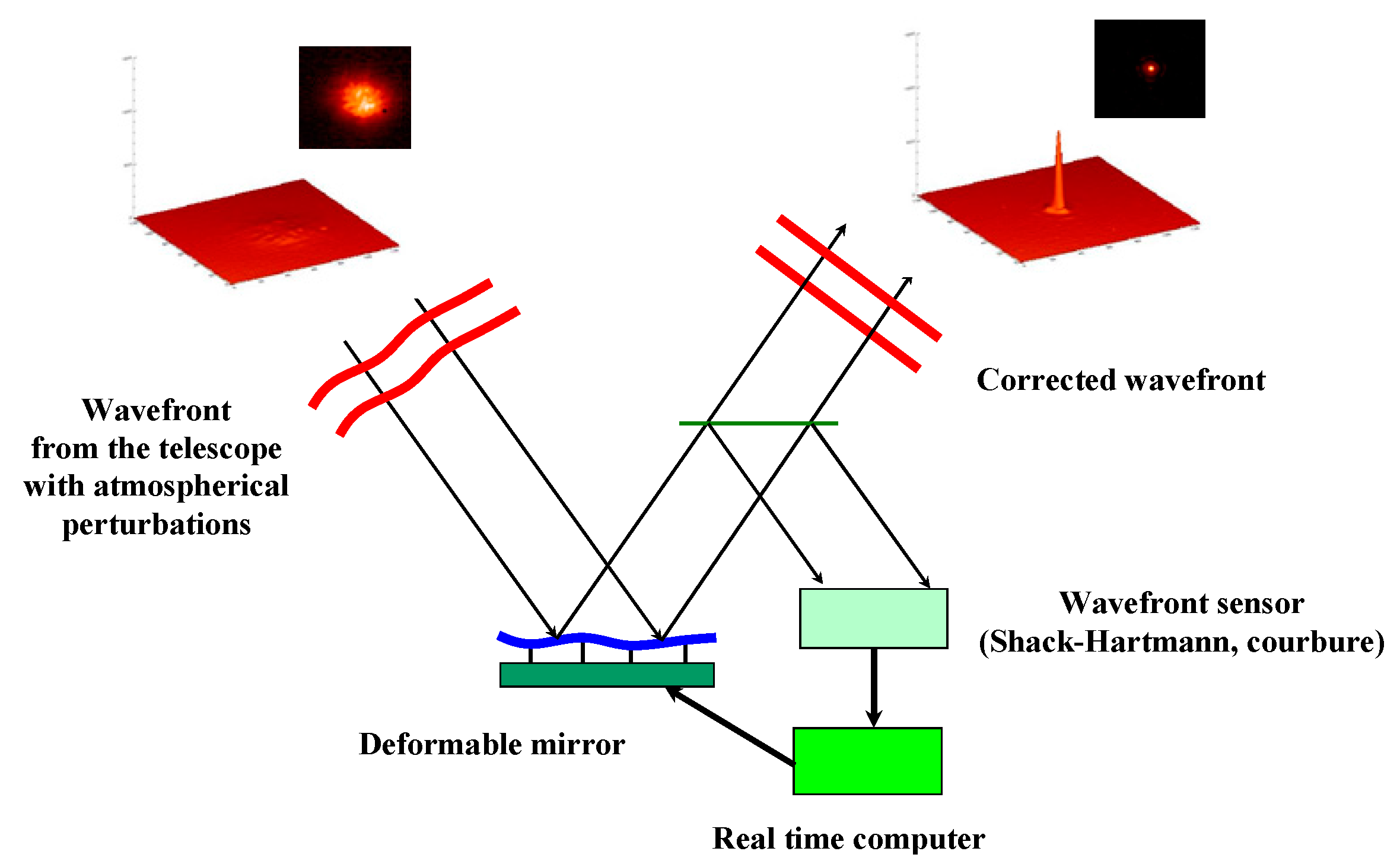
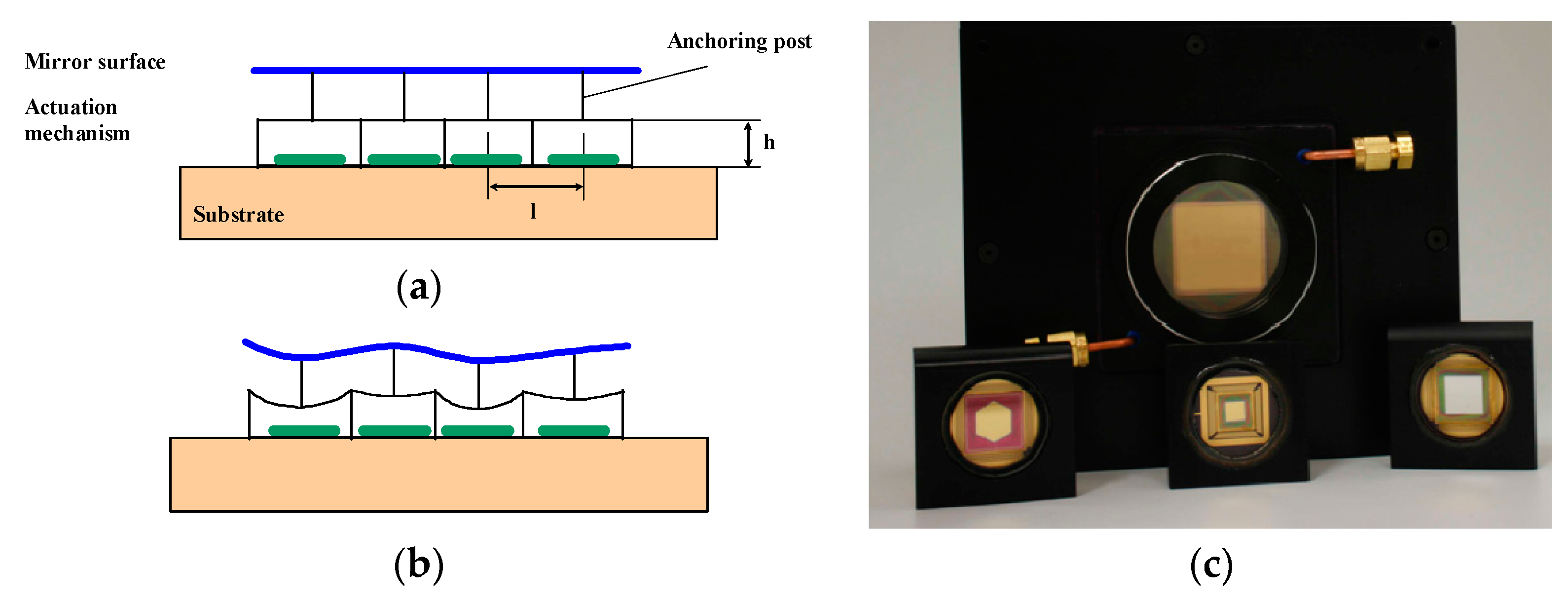
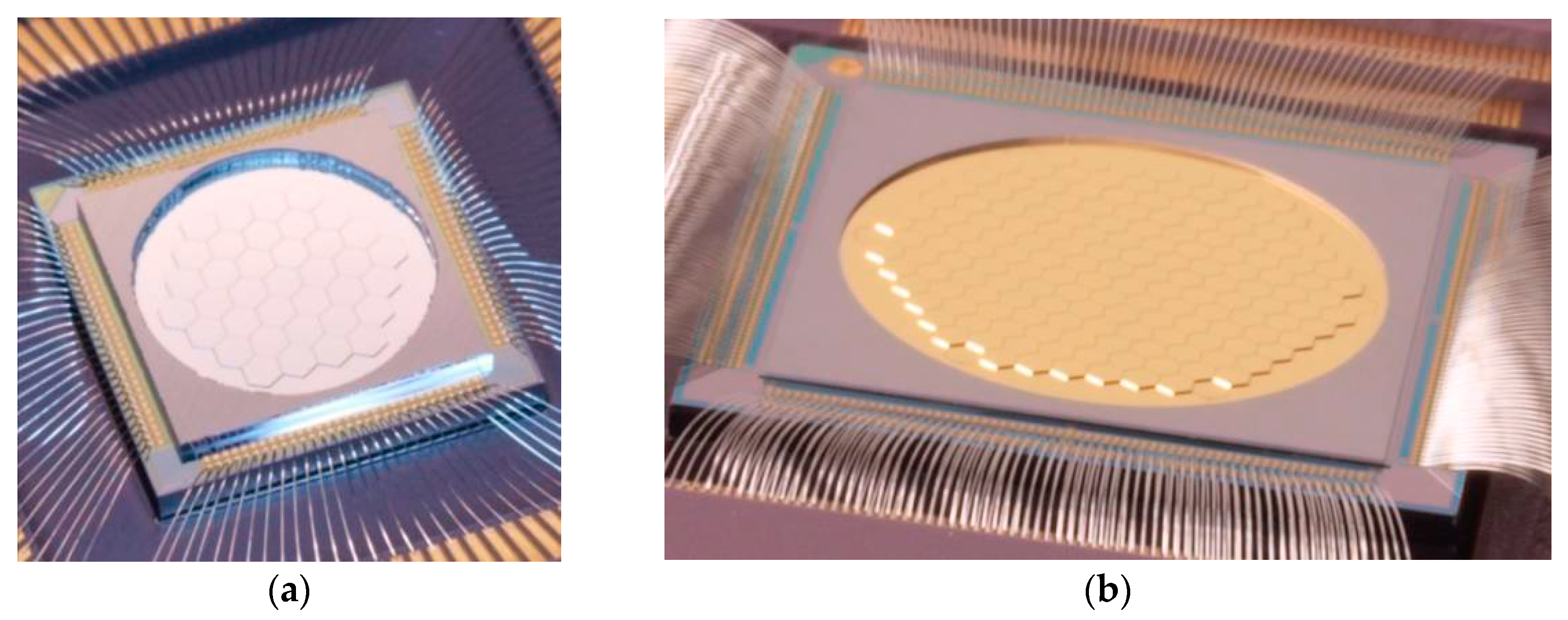
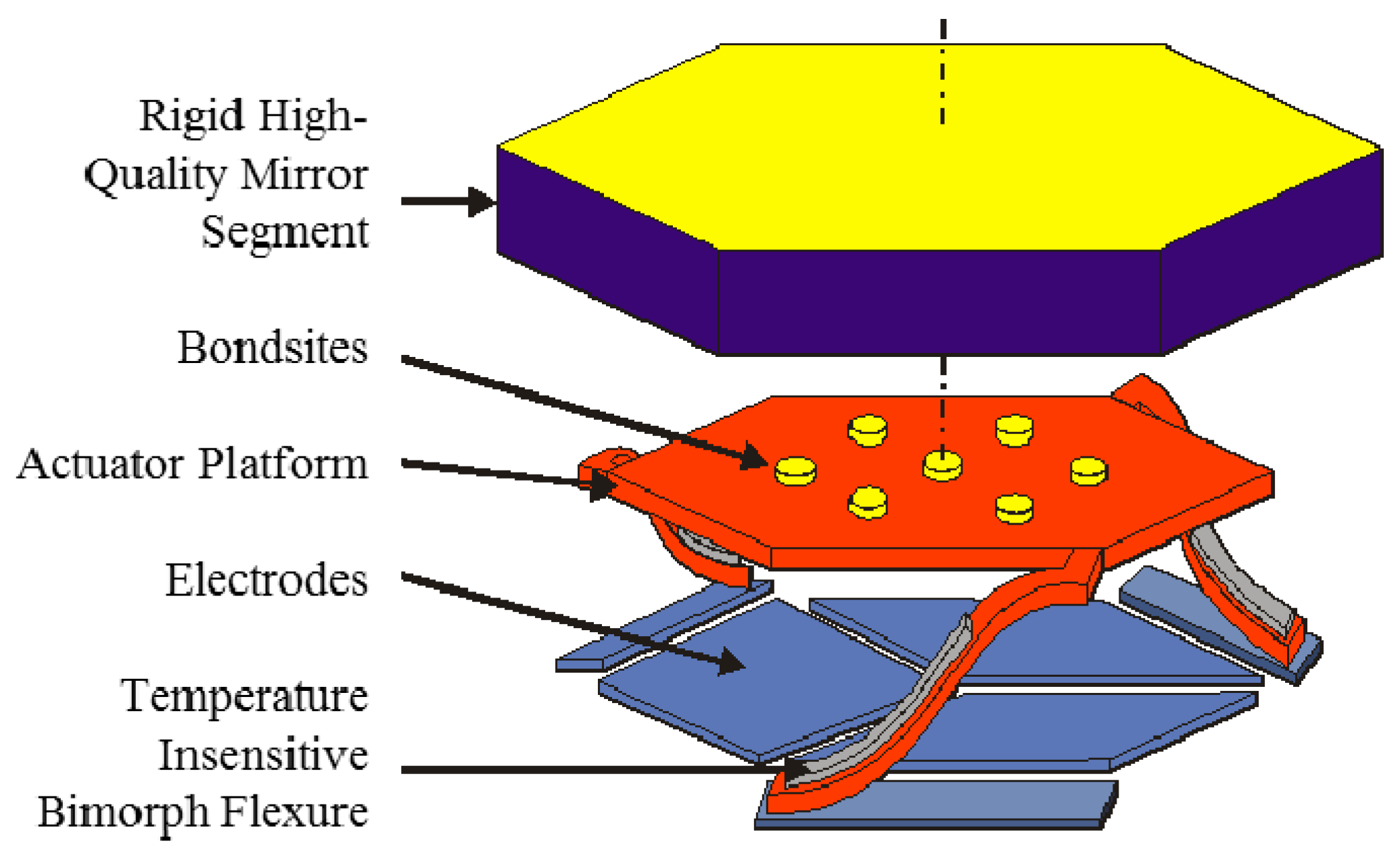
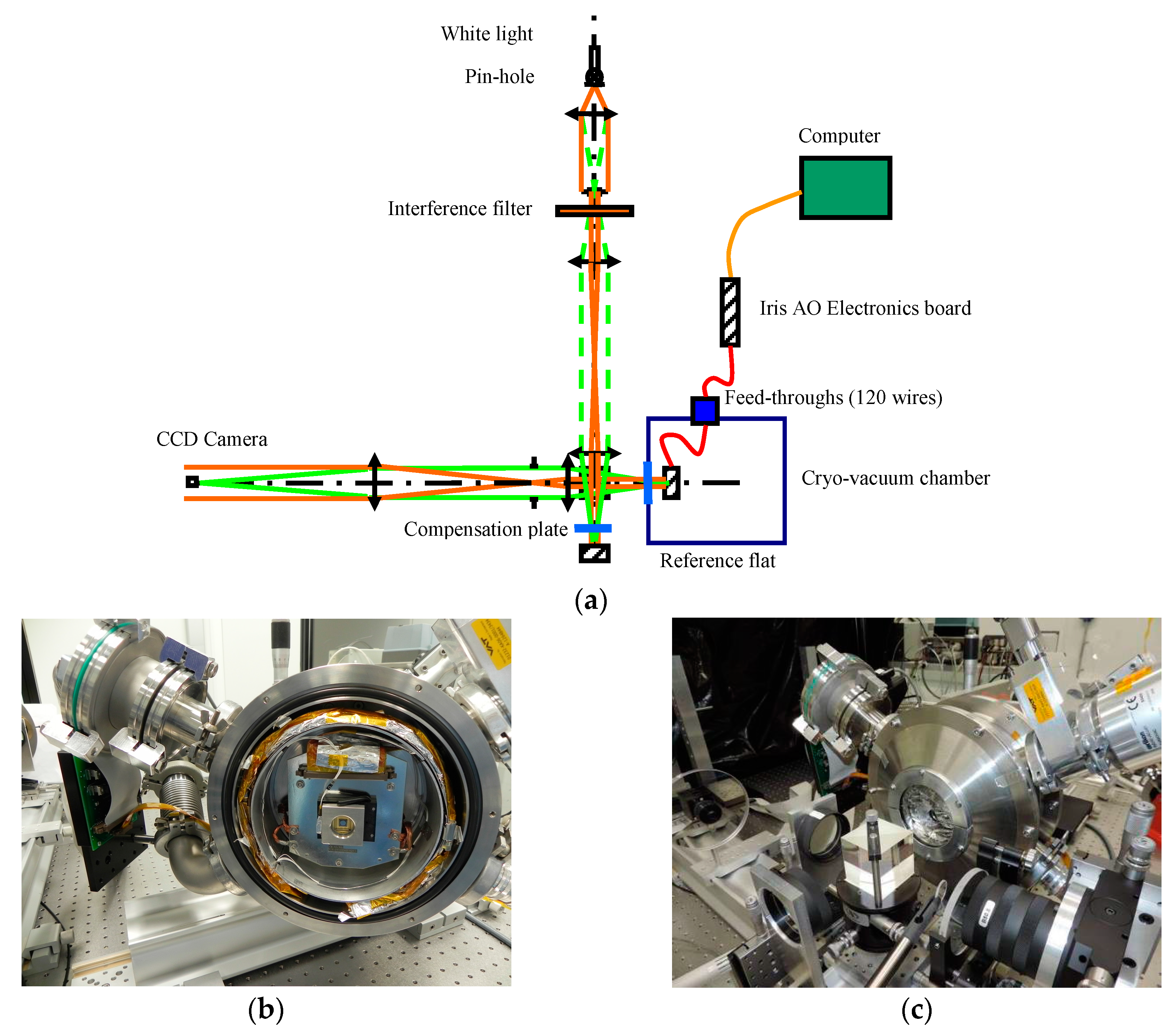
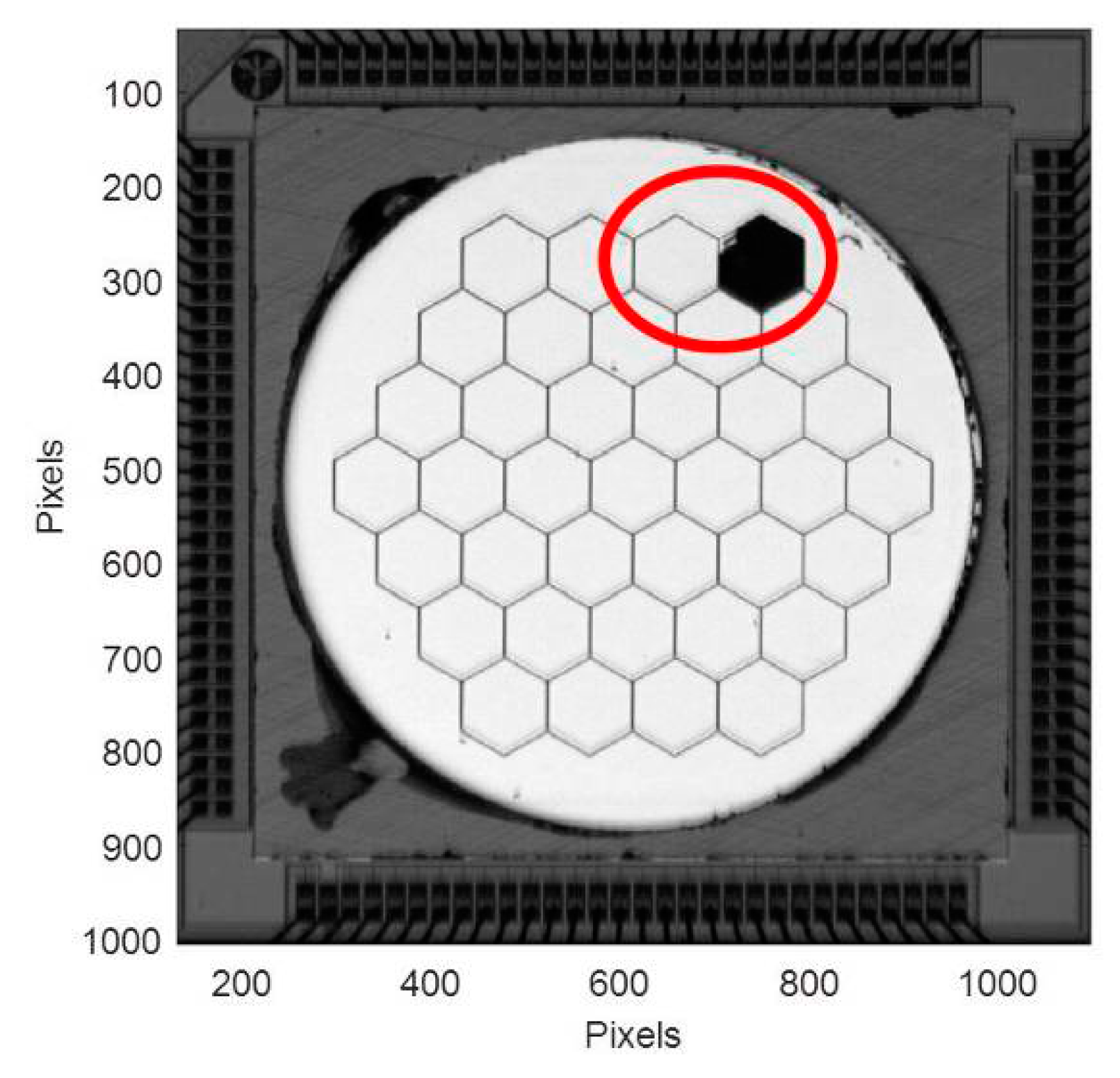


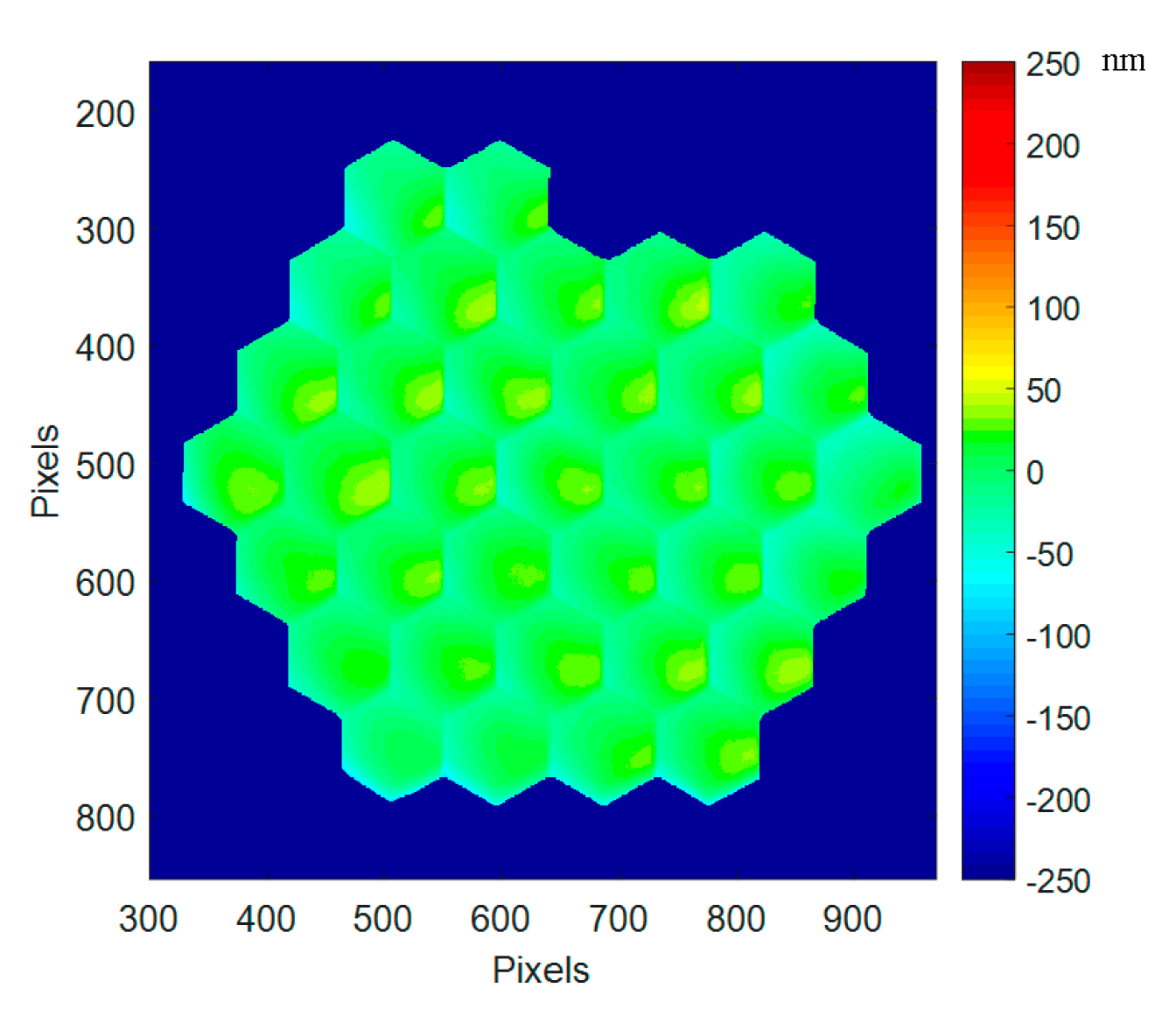
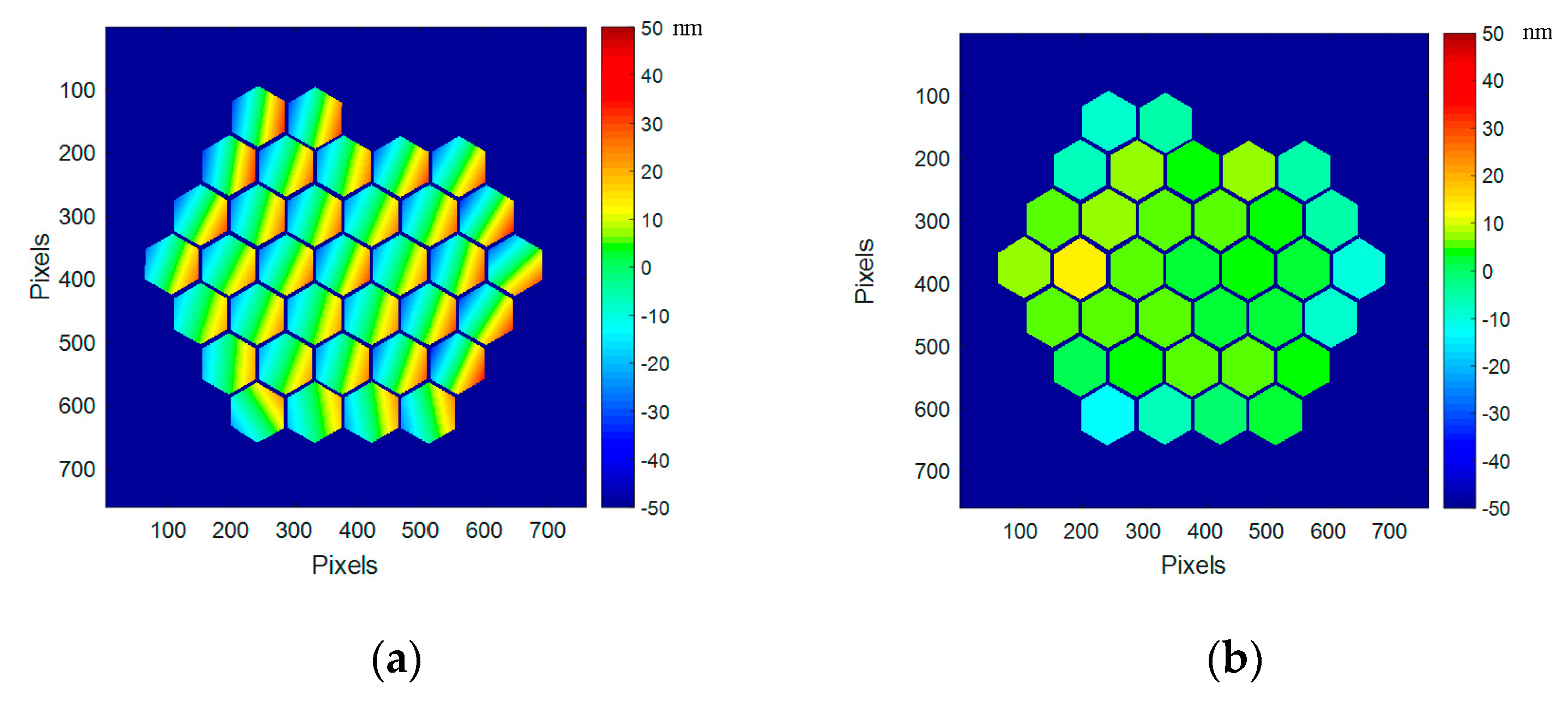
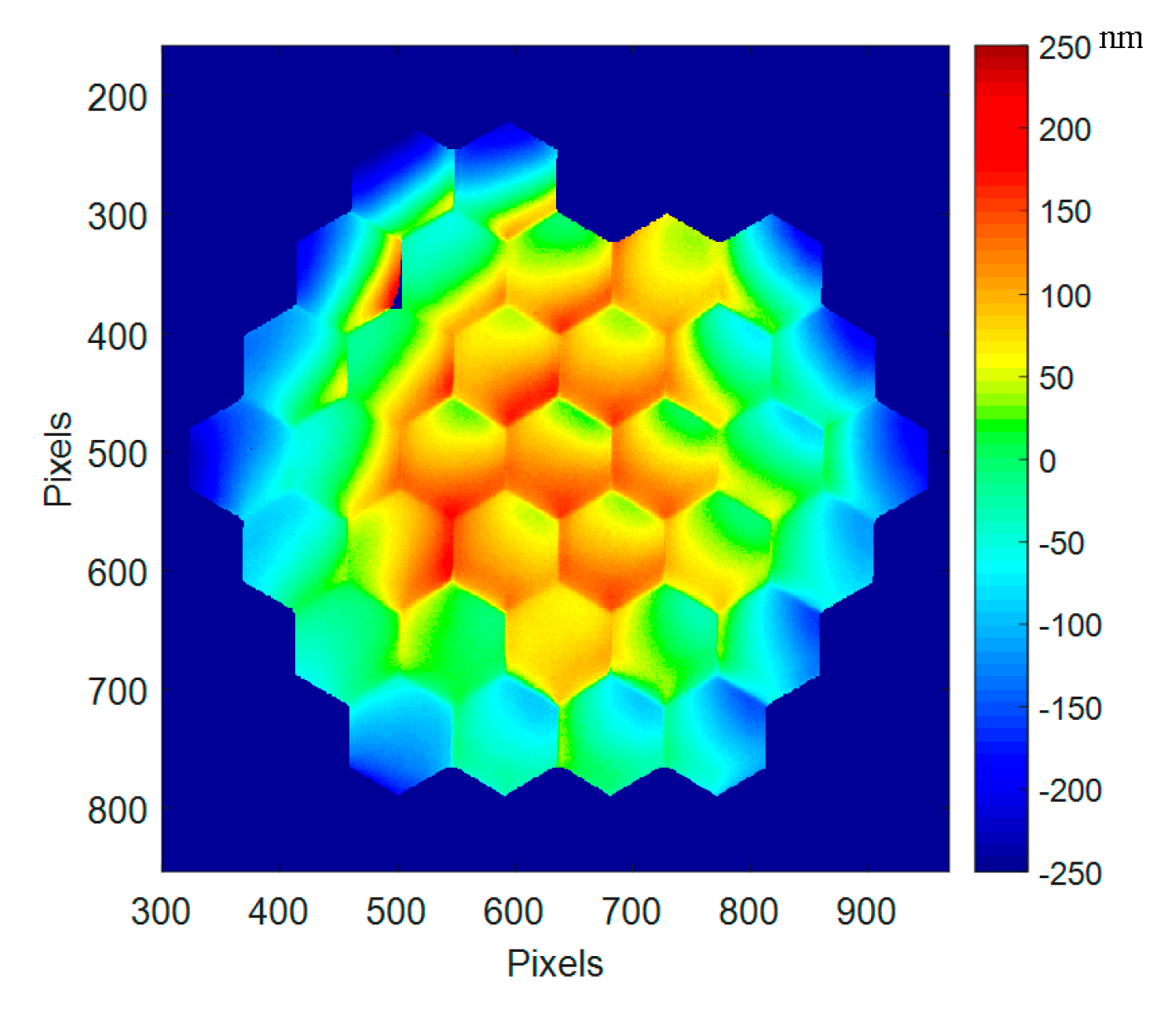
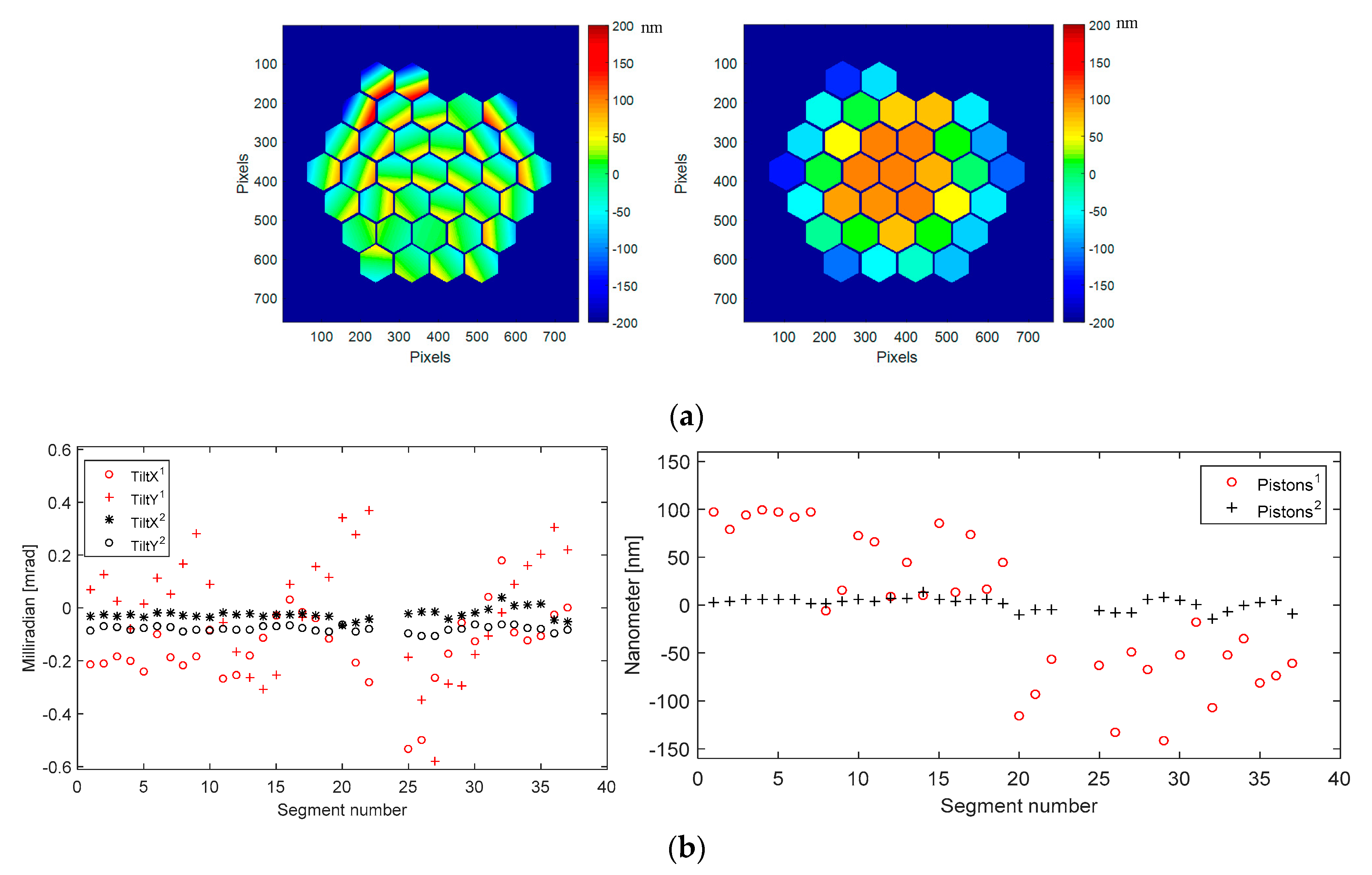
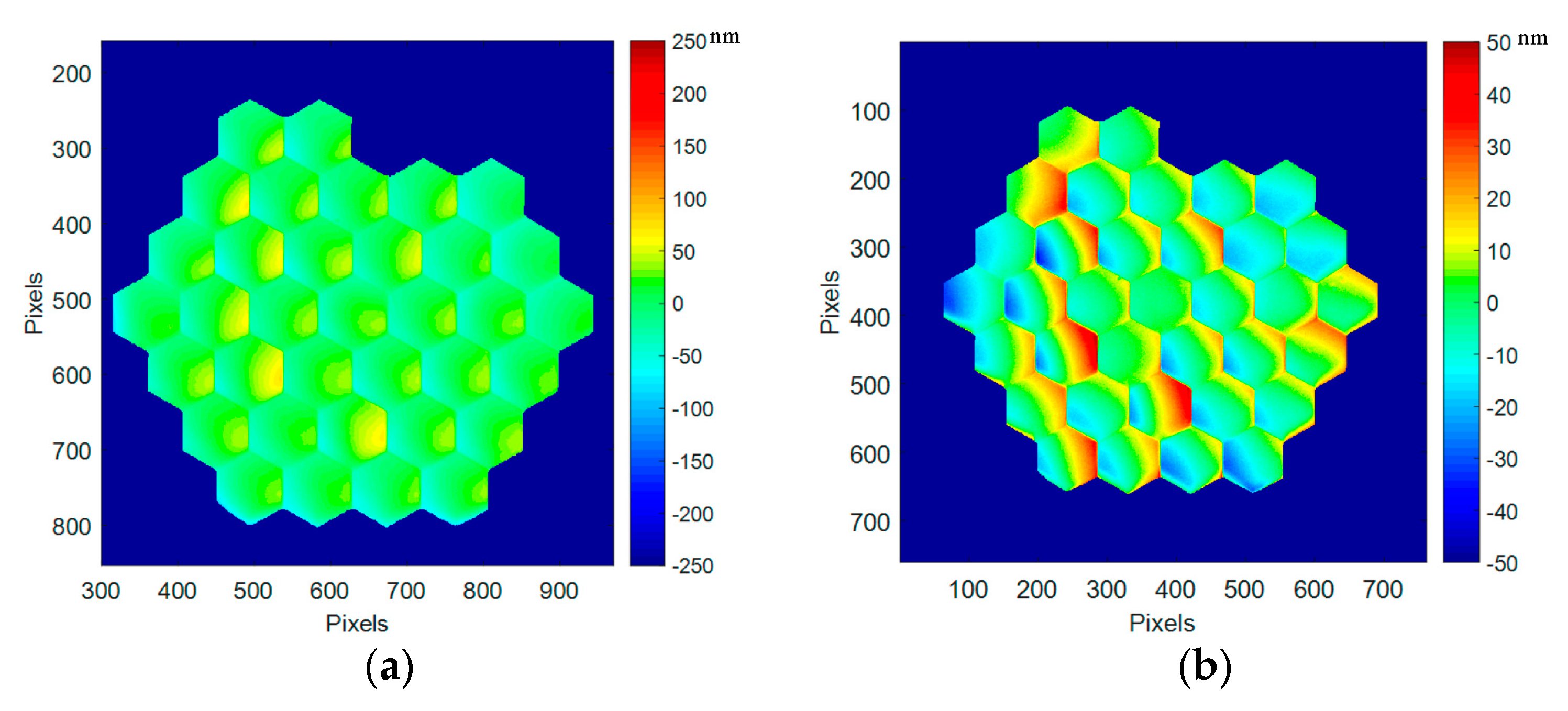

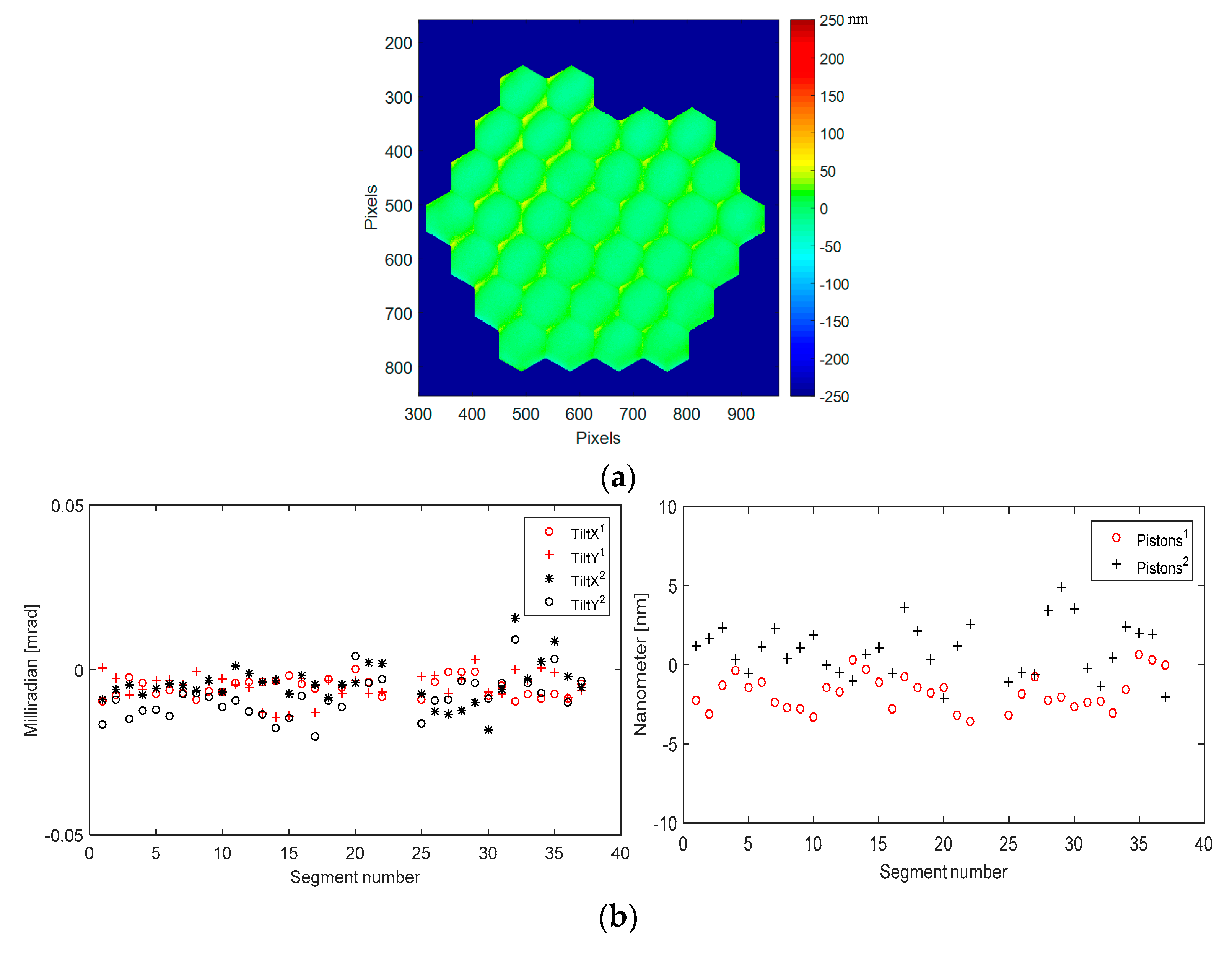
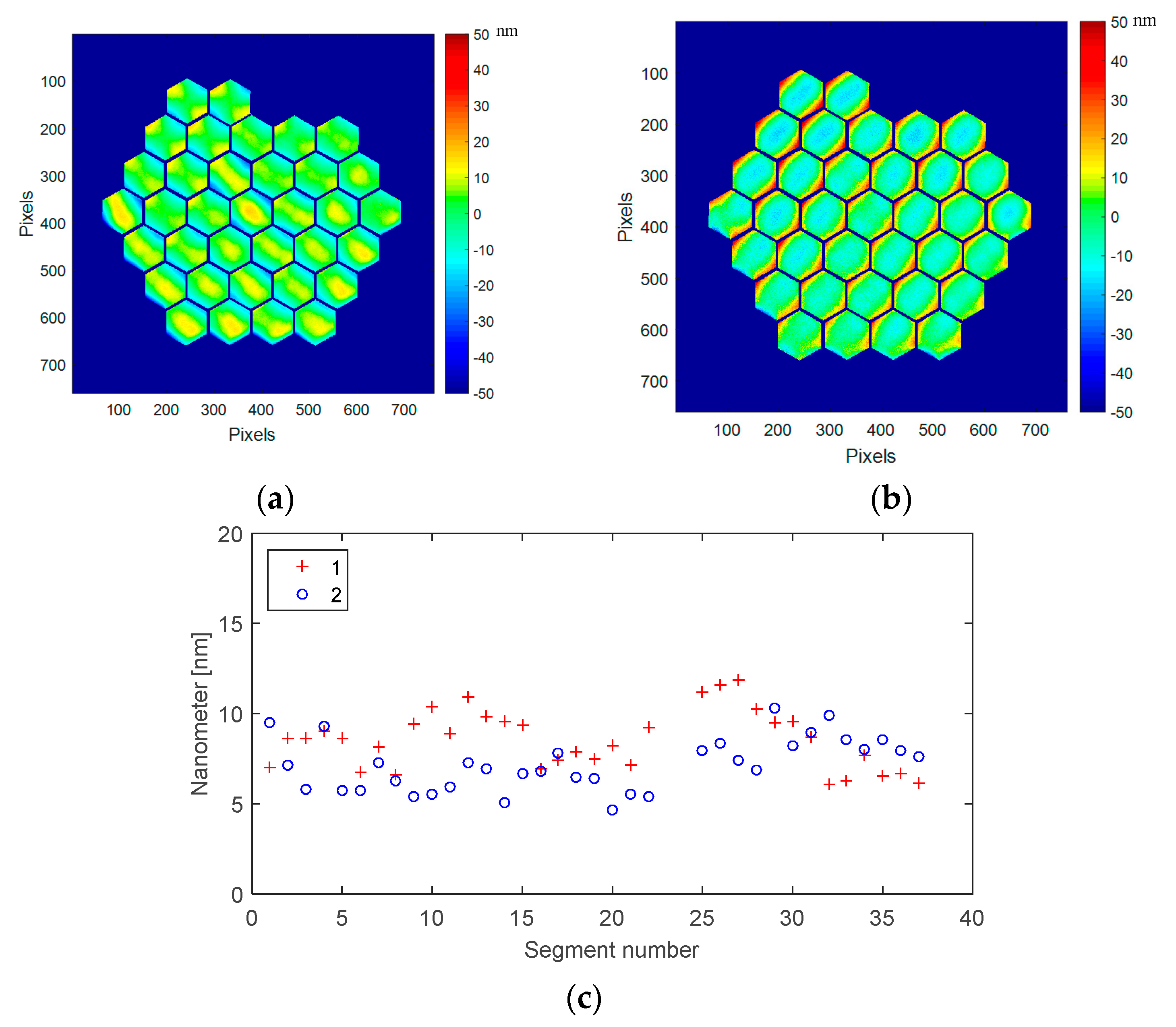

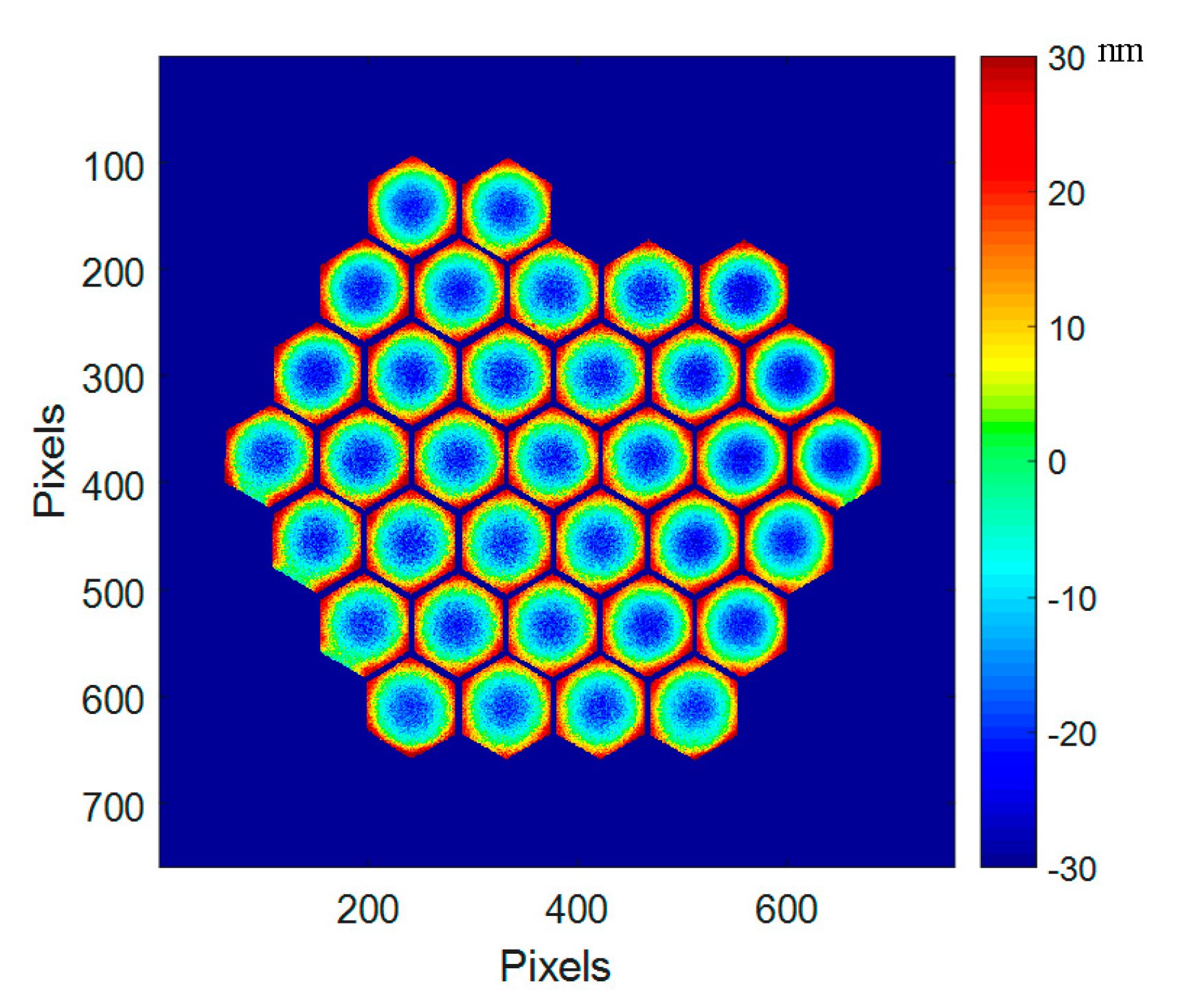
© 2017 by the authors. Licensee MDPI, Basel, Switzerland. This article is an open access article distributed under the terms and conditions of the Creative Commons Attribution (CC BY) license (http://creativecommons.org/licenses/by/4.0/).
Share and Cite
Zamkotsian, F.; Lanzoni, P.; Barette, R.; Helmbrecht, M.; Marchis, F.; Teichman, A. Operation of a MOEMS Deformable Mirror in Cryo: Challenges and Results. Micromachines 2017, 8, 233. https://doi.org/10.3390/mi8080233
Zamkotsian F, Lanzoni P, Barette R, Helmbrecht M, Marchis F, Teichman A. Operation of a MOEMS Deformable Mirror in Cryo: Challenges and Results. Micromachines. 2017; 8(8):233. https://doi.org/10.3390/mi8080233
Chicago/Turabian StyleZamkotsian, Frederic, Patrick Lanzoni, Rudy Barette, Michael Helmbrecht, Franck Marchis, and Alex Teichman. 2017. "Operation of a MOEMS Deformable Mirror in Cryo: Challenges and Results" Micromachines 8, no. 8: 233. https://doi.org/10.3390/mi8080233




